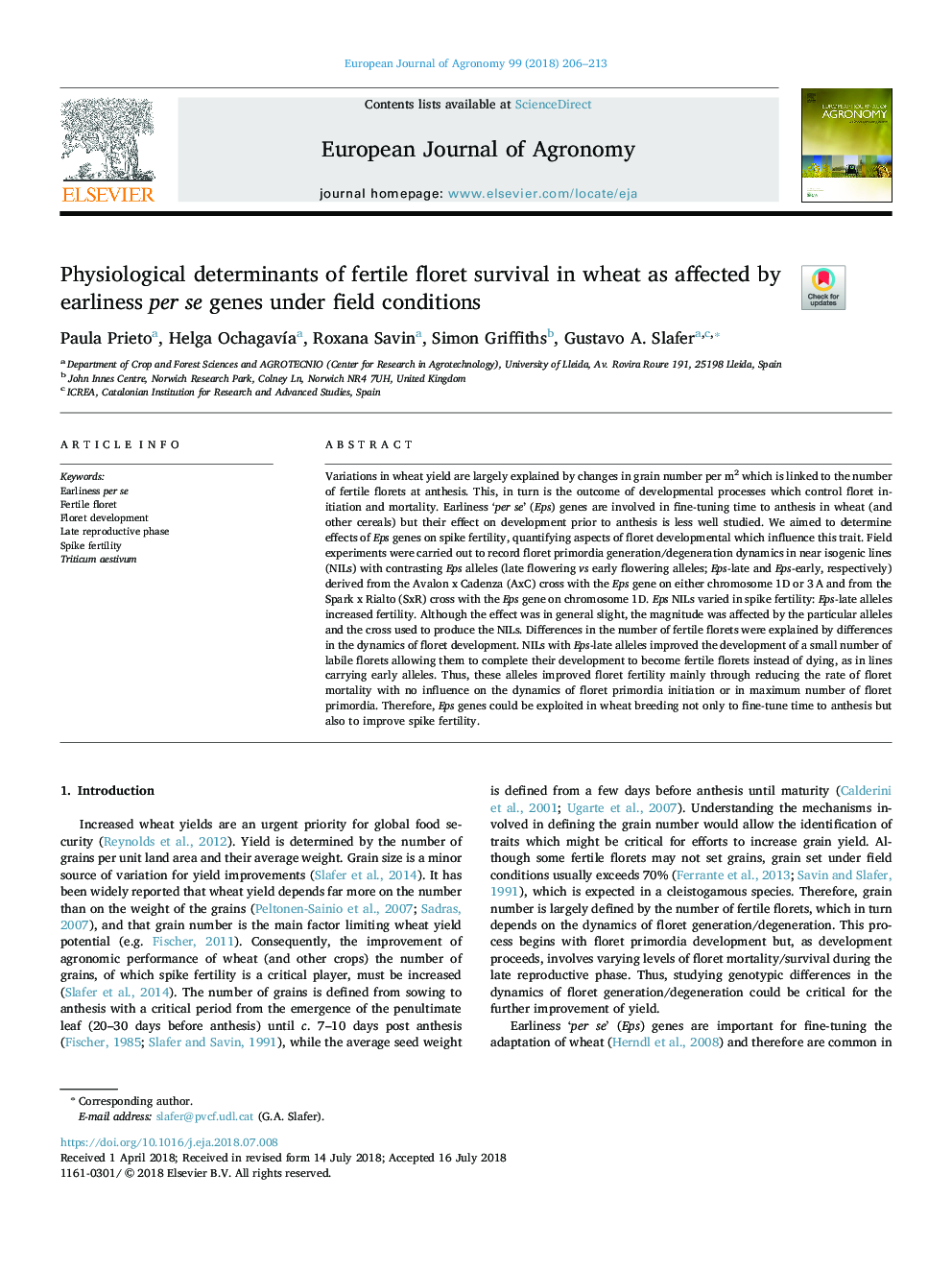| کد مقاله | کد نشریه | سال انتشار | مقاله انگلیسی | نسخه تمام متن |
|---|---|---|---|---|
| 8878881 | 1624425 | 2018 | 8 صفحه PDF | دانلود رایگان |
عنوان انگلیسی مقاله ISI
Physiological determinants of fertile floret survival in wheat as affected by earliness per se genes under field conditions
ترجمه فارسی عنوان
عوامل تعیین کننده فیزیولوژیکی بقای گل گلدان در گندم تحت تأثیر ژن های پیش گیگی در شرایط
دانلود مقاله + سفارش ترجمه
دانلود مقاله ISI انگلیسی
رایگان برای ایرانیان
کلمات کلیدی
موضوعات مرتبط
علوم زیستی و بیوفناوری
علوم کشاورزی و بیولوژیک
علوم زراعت و اصلاح نباتات
چکیده انگلیسی
Variations in wheat yield are largely explained by changes in grain number per m2 which is linked to the number of fertile florets at anthesis. This, in turn is the outcome of developmental processes which control floret initiation and mortality. Earliness 'per se' (Eps) genes are involved in fine-tuning time to anthesis in wheat (and other cereals) but their effect on development prior to anthesis is less well studied. We aimed to determine effects of Eps genes on spike fertility, quantifying aspects of floret developmental which influence this trait. Field experiments were carried out to record floret primordia generation/degeneration dynamics in near isogenic lines (NILs) with contrasting Eps alleles (late flowering vs early flowering alleles; Eps-late and Eps-early, respectively) derived from the Avalon x Cadenza (AxC) cross with the Eps gene on either chromosome 1D or 3âA and from the Spark x Rialto (SxR) cross with the Eps gene on chromosome 1D. Eps NILs varied in spike fertility: Eps-late alleles increased fertility. Although the effect was in general slight, the magnitude was affected by the particular alleles and the cross used to produce the NILs. Differences in the number of fertile florets were explained by differences in the dynamics of floret development. NILs with Eps-late alleles improved the development of a small number of labile florets allowing them to complete their development to become fertile florets instead of dying, as in lines carrying early alleles. Thus, these alleles improved floret fertility mainly through reducing the rate of floret mortality with no influence on the dynamics of floret primordia initiation or in maximum number of floret primordia. Therefore, Eps genes could be exploited in wheat breeding not only to fine-tune time to anthesis but also to improve spike fertility.
ناشر
Database: Elsevier - ScienceDirect (ساینس دایرکت)
Journal: European Journal of Agronomy - Volume 99, September 2018, Pages 206-213
Journal: European Journal of Agronomy - Volume 99, September 2018, Pages 206-213
نویسندگان
Paula Prieto, Helga OchagavÃa, Roxana Savin, Simon Griffiths, Gustavo A. Slafer,
